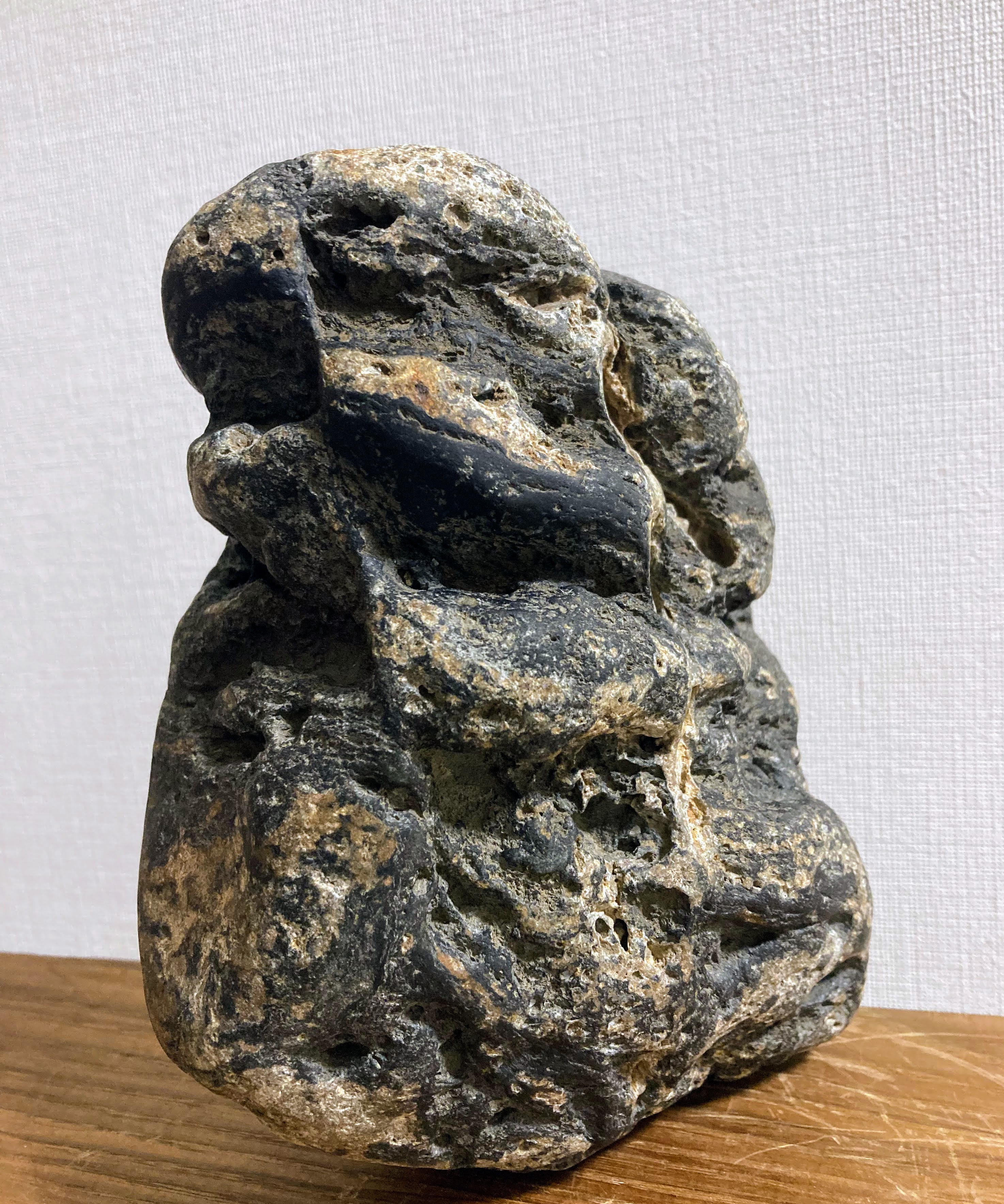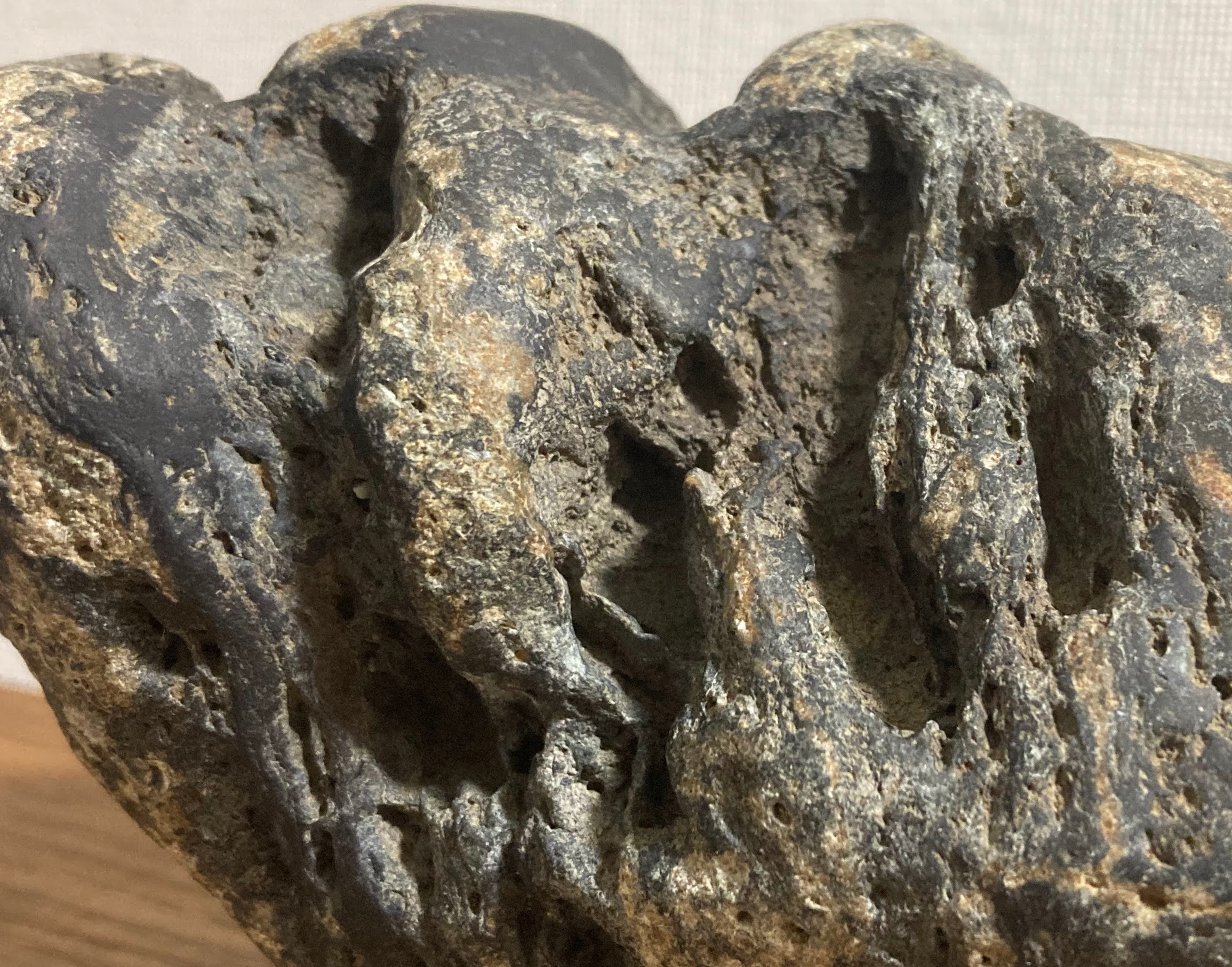Jagure
Jagure
In Suiseki, the word of "Jagure" (ジャグレ) is also used to explain the condition of the stone surface.
Jagure is more famous than Sudachi(巣立) and Suiseki collectors want to have one Jagure at least.
It is also called Jakure.
The origin of the term is not known exactly. There is a theory that it is from snake trail because the surface looks like a serpentine road or meander. In Japanese, "Ja" means snake and "Gure" means tail. Another theory is to be gouged. "Syakure" means to be gouged.
In either case, Jagure or Jakure, the term is only used in Suiseki, so most Japanese do not understand it.
Suiseki is a small minority and most Japanese people do not even know Suiseki recently. Therefore, it is quite interesting that new terms were made which means many people are involved in Suiseki in olden times.
Today, new terms for Suiseki are not likely to be generated. However, it is not bad that old terms are still alive in Suiseki now.
One day Suiseki boom may break out if some terms will have been used and Suiseki will not have been died.
The following photos are Jagure:
Please note that Jagure should be on hard stone. Fine, hard stone with Jagure is preferred in Suiseki.
If it is not hard, it is just fragile stone and not regarded as Suiseki.





